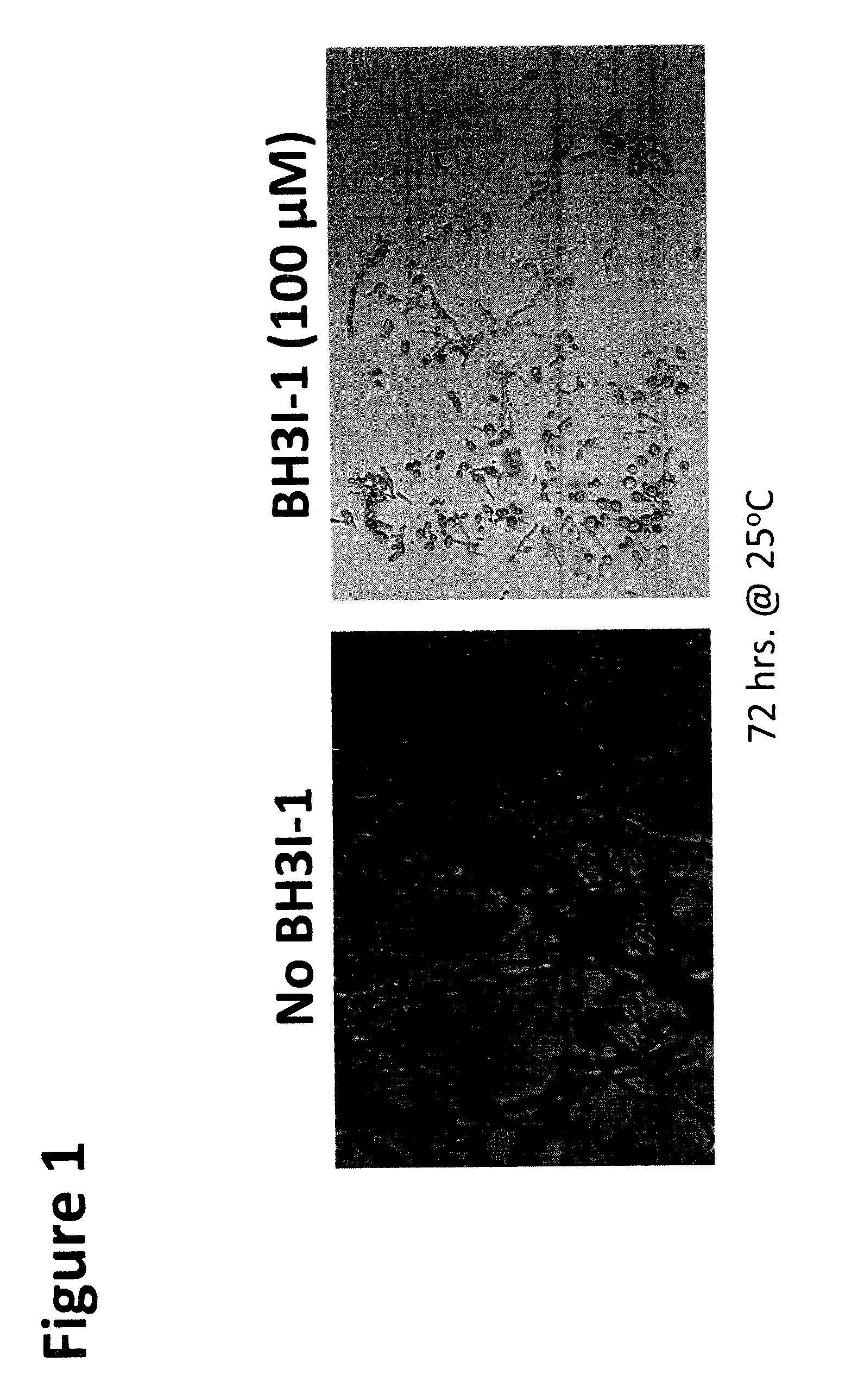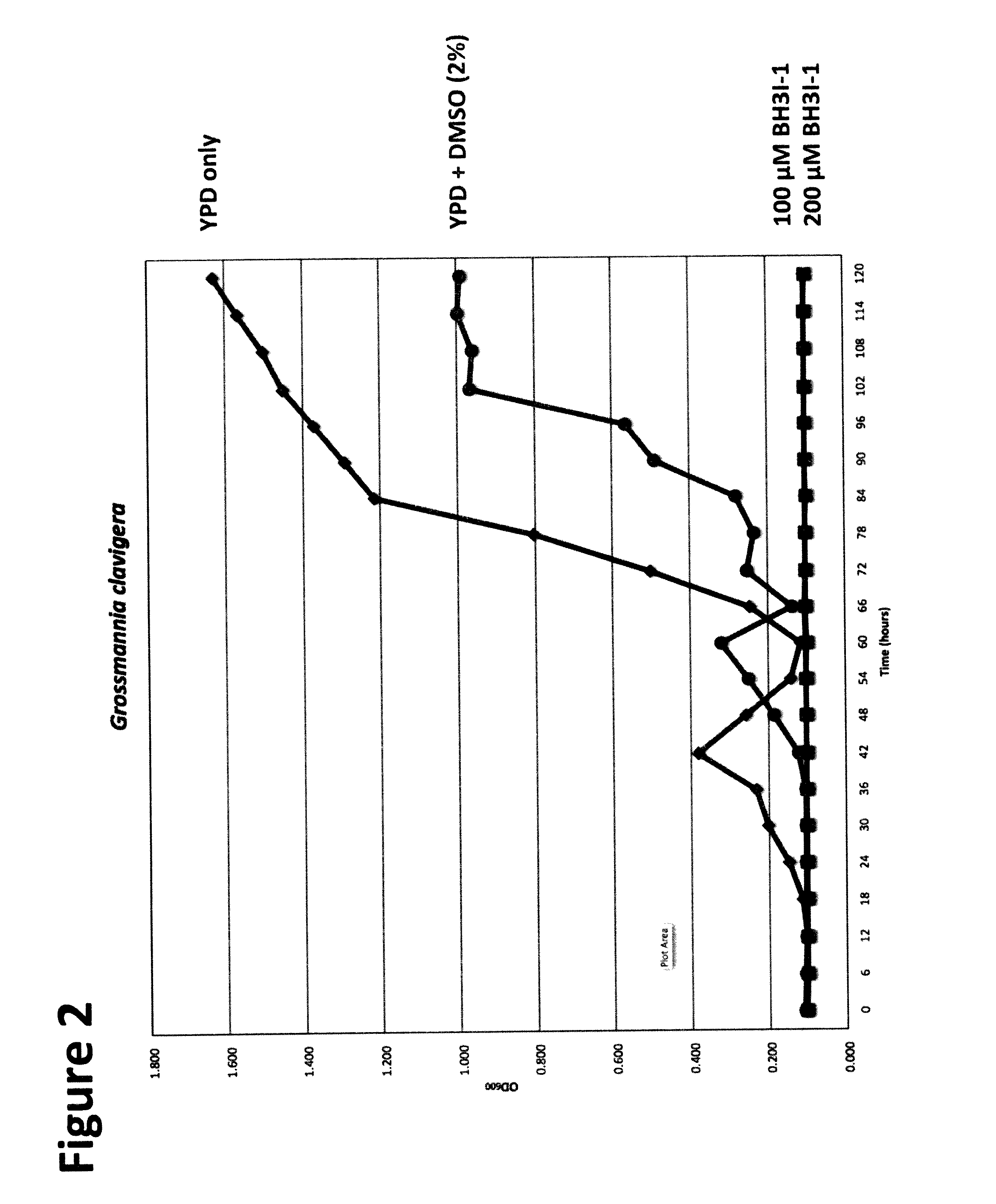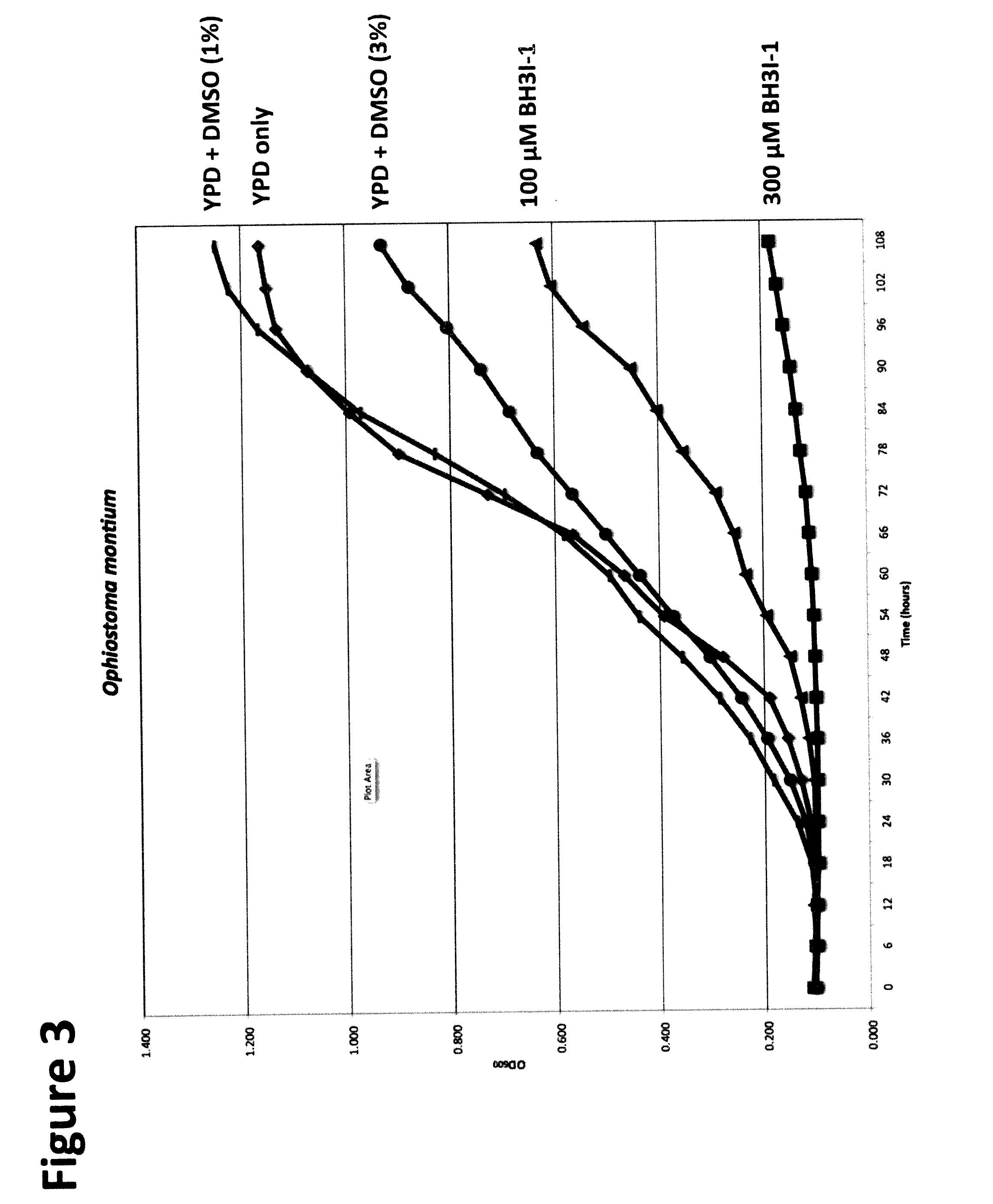Method for inhibiting conidial germination and mycelial growth of fungi symbiotically associated with bark beetles
a technology of symbiotic association and germination, which is applied in the field of molecular biology, can solve the problems of inability to fully realize the effect of germination
- Summary
- Abstract
- Description
- Claims
- Application Information
AI Technical Summary
Benefits of technology
Problems solved by technology
Method used
Image
Examples
Embodiment Construction
[0029]A. Overview
[0030]Currently very few options exist for controlling or limiting bark beetle infestations of coniferous trees. Chemical pesticides and beetle pheromone treatments are expensive and mostly ineffective. The present invention is based on the novel discovery of anti-fungal properties of the small molecules BH3I-1, BH3I-1-12, BH3I-1-66, BH3I-1-68 and BH3I-1-69 against G. clavigera, O. montium and C. brevicomi, obligate symbionts of the mountain pine beetle and western pine beetle. The invention provides a method for managing, controlling and / or limiting bark beetle infestations of coniferous trees through inhibition of conidial germination and mycelial growth of the fungi symbiotically associated with bark beetles.
[0031]B. Anti-Fungal Properties of BH3I-1, BH3I-1-12, BH3I-1-66, BH3I-1-68 and BH3I-1-69.
[0032]The inventors have discovered that the small molecule BH3I-1 and four derivatives of RH3I-1 are effective at inhibiting conidial germination and mycelial growth of ...
PUM
 Login to View More
Login to View More Abstract
Description
Claims
Application Information
 Login to View More
Login to View More - R&D
- Intellectual Property
- Life Sciences
- Materials
- Tech Scout
- Unparalleled Data Quality
- Higher Quality Content
- 60% Fewer Hallucinations
Browse by: Latest US Patents, China's latest patents, Technical Efficacy Thesaurus, Application Domain, Technology Topic, Popular Technical Reports.
© 2025 PatSnap. All rights reserved.Legal|Privacy policy|Modern Slavery Act Transparency Statement|Sitemap|About US| Contact US: help@patsnap.com



